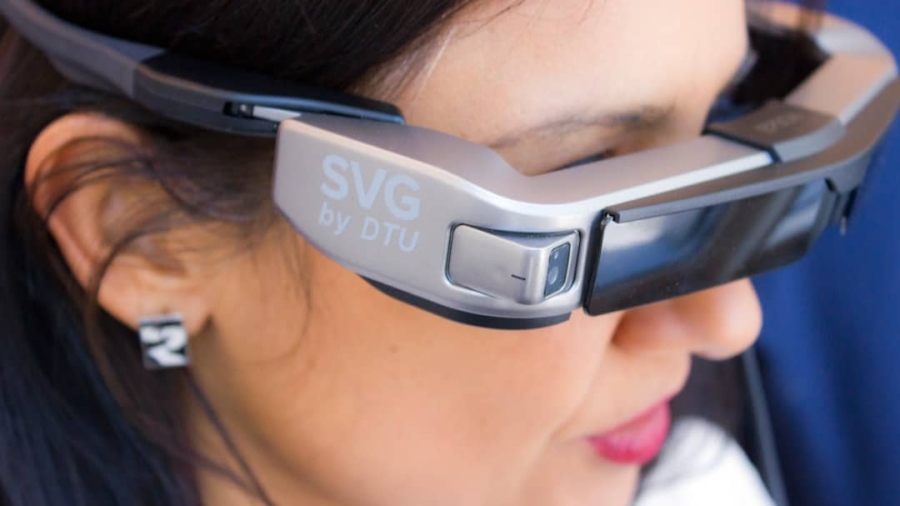Digital assistants have become increasingly prevalent in various sectors, and their integration into industrial environments marks a significant evolution in how businesses operate. These intelligent systems, often powered by artificial intelligence (AI) and machine learning, are designed to assist human workers by automating tasks, providing real-time data analysis, and facilitating communication. In industrial settings, where efficiency and precision are paramount, digital assistants can streamline operations, enhance productivity, and reduce the likelihood of human error.
The advent of these technologies is not merely a trend; it represents a fundamental shift in the operational paradigms of manufacturing, logistics, and other industrial sectors. The role of digital assistants in industrial environments extends beyond simple task automation. They can analyze vast amounts of data generated by machinery and processes, offering insights that were previously unattainable.
For instance, predictive maintenance powered by digital assistants can foresee equipment failures before they occur, allowing for timely interventions that minimize downtime. Furthermore, these systems can adapt to the unique needs of different industries, from automotive manufacturing to pharmaceuticals, showcasing their versatility and potential for widespread application. As industries continue to embrace digital transformation, understanding the capabilities and implications of digital assistants becomes crucial for stakeholders aiming to remain competitive.
Key Takeaways
- Digital assistants are becoming increasingly popular in industrial environments, offering a range of benefits such as improved efficiency and productivity.
- Current use of digital assistants in industrial settings includes tasks such as inventory management, equipment maintenance, and data analysis.
- Advantages of digital assistants in industrial environments include reduced human error, increased accuracy, and improved decision-making, while limitations include potential job displacement and data security concerns.
- Emerging technologies and innovations in digital assistants for industrial use include the integration of artificial intelligence, machine learning, and natural language processing.
- Integration of digital assistants with industrial machinery and equipment is enabling real-time monitoring, predictive maintenance, and remote operation, leading to improved operational efficiency and cost savings.
Current Use of Digital Assistants in Industrial Settings
In contemporary industrial settings, digital assistants are employed in various capacities, enhancing operational efficiency and decision-making processes. One prominent application is in supply chain management, where digital assistants help monitor inventory levels, track shipments, and optimize logistics routes. For example, companies like Amazon utilize AI-driven digital assistants to manage their vast warehouses, ensuring that products are stored efficiently and retrieved quickly.
These systems can analyze historical data to predict demand fluctuations, allowing businesses to adjust their inventory strategies proactively. Another significant area where digital assistants are making an impact is in the realm of workforce management. In manufacturing plants, digital assistants can assist workers by providing real-time information about production schedules, machine status, and safety protocols.
For instance, a worker on the assembly line might use a voice-activated digital assistant to query the status of a particular machine or receive instructions on how to troubleshoot an issue.
Advantages and Limitations of Digital Assistants in Industrial Environments
The advantages of integrating digital assistants into industrial environments are manifold. One of the most significant benefits is the enhancement of operational efficiency. By automating routine tasks such as data entry or inventory tracking, digital assistants free up human workers to focus on more complex and value-added activities.
This shift not only increases productivity but also improves job satisfaction as employees engage in more meaningful work. Additionally, the ability of digital assistants to process and analyze large datasets in real-time enables organizations to make data-driven decisions swiftly, which is crucial in fast-paced industrial settings. However, the implementation of digital assistants is not without its limitations.
One major concern is the potential for over-reliance on technology. While digital assistants can provide valuable insights and automate tasks, they are not infallible. Technical glitches or software malfunctions can lead to significant disruptions in operations if workers are unprepared to handle such situations manually.
Furthermore, there is the challenge of ensuring that all employees are adequately trained to use these systems effectively. A lack of familiarity with digital tools can create barriers to adoption and limit the potential benefits that these technologies offer.
Emerging Technologies and Innovations in Digital Assistants for Industrial Use
As technology continues to advance at a rapid pace, new innovations are emerging that enhance the capabilities of digital assistants in industrial environments. One notable trend is the integration of natural language processing (NLP) into these systems. NLP allows digital assistants to understand and respond to human language more effectively, making interactions more intuitive for users.
This development is particularly beneficial in industrial settings where workers may not have technical backgrounds but need to communicate with complex systems. Another exciting innovation is the incorporation of augmented reality (AR) into digital assistant applications. AR can provide workers with visual overlays that enhance their understanding of machinery or processes.
For instance, a technician repairing a piece of equipment could use AR glasses connected to a digital assistant that displays step-by-step instructions directly onto their field of vision. This hands-free approach not only improves efficiency but also reduces the likelihood of errors during maintenance tasks. As these technologies continue to evolve, they promise to further transform how digital assistants function within industrial environments.
Integration of Digital Assistants with Industrial Machinery and Equipment
The seamless integration of digital assistants with industrial machinery and equipment is crucial for maximizing their effectiveness. Many modern machines come equipped with sensors that generate real-time data about their performance and condition. Digital assistants can leverage this data to provide insights into operational efficiency and maintenance needs.
For example, a digital assistant could monitor vibration levels in a motor and alert technicians if they exceed normal thresholds, indicating potential mechanical issues. Moreover, the integration of digital assistants with Internet of Things (IoT) devices enhances their capabilities significantly. IoT devices can communicate with each other and share data across networks, allowing digital assistants to access a comprehensive view of operations.
This interconnectedness enables predictive analytics that can forecast equipment failures or optimize production schedules based on real-time demand signals. As industries increasingly adopt IoT technologies, the role of digital assistants will expand further, creating a more interconnected and responsive industrial ecosystem.
Safety and Security Considerations for Digital Assistants in Industrial Environments
While the benefits of digital assistants in industrial environments are substantial, safety and security considerations must be addressed to mitigate potential risks. One primary concern is cybersecurity; as digital assistants become more integrated into critical operations, they may become targets for cyberattacks. Ensuring robust security measures are in place is essential to protect sensitive data and maintain operational integrity.
Organizations must implement encryption protocols, regular software updates, and employee training programs focused on cybersecurity awareness. In addition to cybersecurity risks, there are safety implications associated with relying on digital assistants for critical decision-making processes. If a digital assistant provides incorrect information due to a malfunction or misinterpretation of data, it could lead to hazardous situations on the factory floor.
Therefore, it is vital for organizations to establish protocols that require human oversight when it comes to critical safety decisions. By balancing the capabilities of digital assistants with human judgment, companies can harness the advantages of these technologies while minimizing risks.
Future Trends and Predictions for Digital Assistants in Industrial Settings
Looking ahead, several trends are likely to shape the future landscape of digital assistants in industrial settings. One prominent trend is the increasing use of machine learning algorithms that enable digital assistants to learn from past experiences and improve their performance over time. As these systems become more sophisticated, they will be able to provide even more accurate predictions and recommendations based on historical data patterns.
Another trend is the growing emphasis on personalization in digital assistant applications. As industries recognize that different roles within an organization have unique needs, there will be a push towards developing tailored solutions that cater specifically to those requirements. For instance, a production manager may require different insights from a digital assistant than a maintenance technician.
By customizing functionalities based on user roles, organizations can enhance user experience and drive greater adoption rates.
The Impact of Digital Assistants on the Future of Industrial Workplaces
The integration of digital assistants into industrial environments represents a transformative shift that has far-reaching implications for how work is conducted in these settings. By automating routine tasks, providing real-time insights, and enhancing communication among workers, these technologies are poised to redefine operational efficiency and productivity standards across various industries. As organizations continue to navigate the complexities of modern manufacturing and logistics challenges, embracing digital assistants will be essential for maintaining competitiveness.
Moreover, as emerging technologies such as AI, IoT, and AR continue to evolve, the capabilities of digital assistants will expand even further. The future promises a more interconnected industrial landscape where human workers collaborate seamlessly with intelligent systems to achieve unprecedented levels of efficiency and innovation. However, it is crucial for organizations to address safety and security concerns proactively while fostering a culture that embraces technological advancements responsibly.
The journey toward fully realizing the potential of digital assistants in industrial environments is just beginning; their impact will undoubtedly shape the future of work in profound ways.
If you are interested in the latest technology trends, you may also want to check out this article on the best laptops for Blender in 2023. This article provides top picks and reviews for laptops that are ideal for running Blender, a popular 3D modeling software. It is a great resource for anyone looking to enhance their digital design capabilities.
FAQs
What are digital assistants in industrial environments?
Digital assistants in industrial environments are software applications or devices that use artificial intelligence (AI) and natural language processing to provide support and assistance to workers in industrial settings. They can help with tasks such as equipment maintenance, inventory management, and production scheduling.
How do digital assistants benefit industrial environments?
Digital assistants can improve efficiency and productivity in industrial environments by providing real-time information, automating routine tasks, and assisting workers with decision-making. They can also help with predictive maintenance, reducing downtime and improving overall equipment effectiveness.
What are some examples of digital assistants in industrial environments?
Examples of digital assistants in industrial environments include voice-activated devices that can provide workers with information and instructions, chatbots that can answer questions and provide guidance, and AI-powered software applications that can analyze data and make recommendations.
What are the challenges of implementing digital assistants in industrial environments?
Challenges of implementing digital assistants in industrial environments include ensuring compatibility with existing systems and equipment, addressing security and privacy concerns, and providing adequate training for workers to effectively use and interact with the digital assistants.
What is the future of digital assistants in industrial environments?
The future of digital assistants in industrial environments is likely to involve further advancements in AI and machine learning, leading to more sophisticated and capable digital assistants. They may also become more integrated with other industrial technologies, such as the Internet of Things (IoT) and augmented reality.



